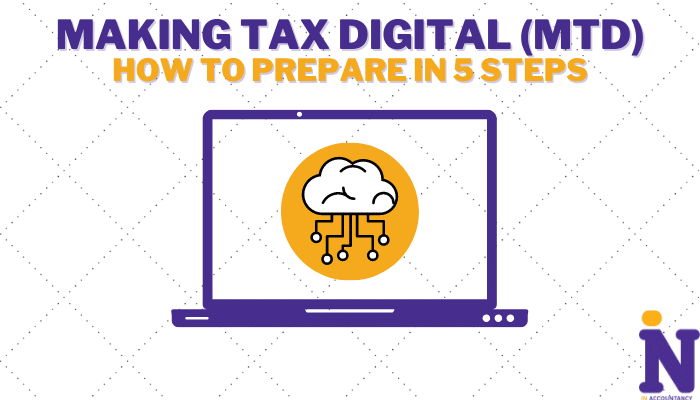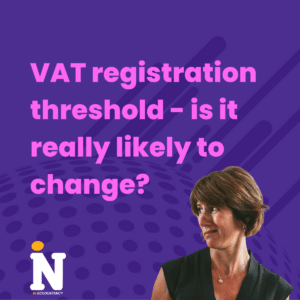1. Understanding MTD compliance and Upcoming Changes
What is MTD compliance?
MTD compliant VAT-registered businesses have clear, fully processed digital records and use compatible cloud-accounting software.
What do I need to know?
UK VAT-Registered businesses with a taxable turnover above £85,000 are required to keep digital records and to use compatible digital software to submit VAT returns. This legislation came into force in April 2019.
MTD will be extended to apply to all UK VAT registered businesses from 1 April 2022, regardless of turnover.
Therefore, all VAT-registered businesses will be required to be MTD-compliant by 1 April 2022.
Read on to ensure that you are prepared for this switch!
2. Pick the right Cloud-Accounting Software Platform
Choosing a digital accounting software can be a daunting task – price, security, and usability are all crucial factors to consider when picking a cloud software to use.
Why can’t I just use excel?
Well, you can, for now.
But this may well change in the future. Plus, you will still need to find a compliant software with the relevant APIs to pull the information directly from your spreadsheet and submit the right numbers to HMRC without any manual intervention.
In short, we would only recommend excel for the smallest and simplest of businesses, as there is so much opportunity for error, and you will still have to keep all the bulky manual records and receipts for 6 years.
What are the benefits?
A suitable cloud-accounting programme will:
- Collate and prepare your VAT returns for you
- Ask you to check each VAT return (and rightly so!!) before confirming, and submitting to HMRC.
Not only that, used correctly, you can attach scanned invoices and receipts directly to the software, which means you don’t need to keep those boxes of original physical information for the required 6 years, saving you both space and money if you are archiving these offsite!
Which platform is the best?
The best platform for you will be one that is affordable, reliable, and efficient.
We’ve saved you a lot of time by listing the most trusted, reliable software platforms below:
The link below contains a wide range of compatible cloud-accounting software platforms, although, we’d strongly recommend using one of the four recommended above.
Find software for Making Tax Digital for VAT – Find software for Making Tax Digital for VAT – GOV.UK
Personally, we love Xero – we think it’s best in class, and is continuously evolving. It’s very user friendly and we are very happy to provide training to our clients so you can take care of most of the ongoing bookkeeping yourselves.
That said, we have many clients using other softwares mentioned above as well as free versions such as Clearbooks and others.
Feel free to drop us a line or give us a call if you would like any more advice or guidance in which to choose.
So, does the software do it all for me?
Remember the old saying ‘garbage in = garbage out’
The software is incredibly intelligent, but it will only do what it’s told by you.
So you do need to know your onions (or your VAT rates in this case), and make sure to post information correctly if you want to submit your own VAT returns directly via compliant software.
Make sure you understand which sales and purchases are exempt from VAT for example, and the difference between exempt and zero rated (and why this matters for your VAT return).
There are also rules around what you can or can’t claim without an actual physical receipt supplied as evidence, so be careful to retain and attach all purchase invoices and receipts before disposing of them.
It is your responsibility to ensure that all your purchase and sales information is fully and correctly processed.
This will allow the software to generate an accurate VAT return for submission.
3. Do your own Research: Ensure Digital Integration
We hope that this article will clear a few things up for you. But, to be fully prepared for the MTD integration, it’s worth doing your own research to properly understand the process and how you can most effectively adapt.
Establishing digital links within your system is essential in ensuring that your business is MTD compliant. If you fail to comply, HMRC can impose penalties.
You can find some useful resources below:
Making Tax Digital for Business – stakeholder communications pack – GOV.UK
Help and support for Making Tax Digital – GOV.UK
VAT Notice 700/22: Making Tax Digital for VAT – GOV.UK
Apply for an exemption from Making Tax Digital for VAT – GOV.UK
If you are unsure of anything, contact us here, give our trusted advisors a call, or drop by our offices in Hazel Grove – we’re always happy to help.
4. Sign up for MTD
You you must sign up for MTD for VAT if your taxable turnover exceeds £85,000. This legislation came into force in April 2019.
From 1 April 2022, all VAT-registered businesses will be required to be MTD-compliant (regardless of turnover).
Sign up via the following link: Sign up for Making Tax Digital for VAT – GOV.UK
What do I need for the sign-up process?
- Your business email
- A government gateway user ID and password (you can create one when you use the service)
- Your VAT registration number and latest VAT return
Sole Traders, Limited Companies, General Partnerships, and Limited Partnerships are all required to provide some additional information:
- Sole Traders must provide their NI Number
- Limited Companies must provide their company registration number and UTR
- General Partnerships must provide their UTR and the postcode where they are registered for self-assessment
- Limited Partnerships must provide their UTR, company registration number and the postcode where they are registered for self-assessment
When to sign up?
Sign up whenever you like, but…
Do not sign up too close to your next tax return due date otherwise you may have to pay twice!
If you already pay by Direct Debit, do not sign up less than:
- 7 days before your next tax return is due
- 5 days after your next VAT return is due
If you do not pay by Direct Debit:
- Sign up at least 3 days before your VAT return is due
5. Submit your VAT returns
Once you have:
- Understood the important changes that will come into force for all VAT-registered businesses on 1 April 2022
- Checked whether you are MTD compliant
- Fully processed all of your purchase and sales information
- Done your own research and/or spoken to a trusted advisor
You can pick and implement an appropriate cloud-accounting software programme before eventually signing up to MTD.
Please remember: avoid signing up less than 5-7 days before/after your next VAT return due date if you pay by Direct Debit, and no less than 3 days before your VAT return due date if using a different payment method.
Is there anything else to be aware of?
Well yes!
This is just the first step of the journey to tax digitalisation and simplification.
Making Tax Digital for Income Tax is being introduced from 1 April 2023 and will apply to all who have income from self employment or property greater than £10,000 per annum.
And believe me, it’s complicated!!
We won’t publish any guidance just yet until the full regulations are published by HMRC, as currently the plans mean that some poor individuals could be required to make up to 23 MTDfIT submissions in each year!!
Crazy, but fingers crossed these loopholes will be ironed out before the go-live.
Which may result in a change in the tax year from 5 April as it is currently back to 31 March… watch this space!
Furthermore, once Making Tax Digital for Income Tax is in place, quarterly reporting for Corporation Tax will follow. Currently this isn’t planned until 1 April 2025 at the earliest, so no pressing urgency, but something to be aware of.
Unsure of something?
Please contact us here if you have any queries or need some friendly advice from one of our trusted advisors – we’d be happy to help.
Alternatively, come and visit us in Hazel Grove for no obligation coffee!







